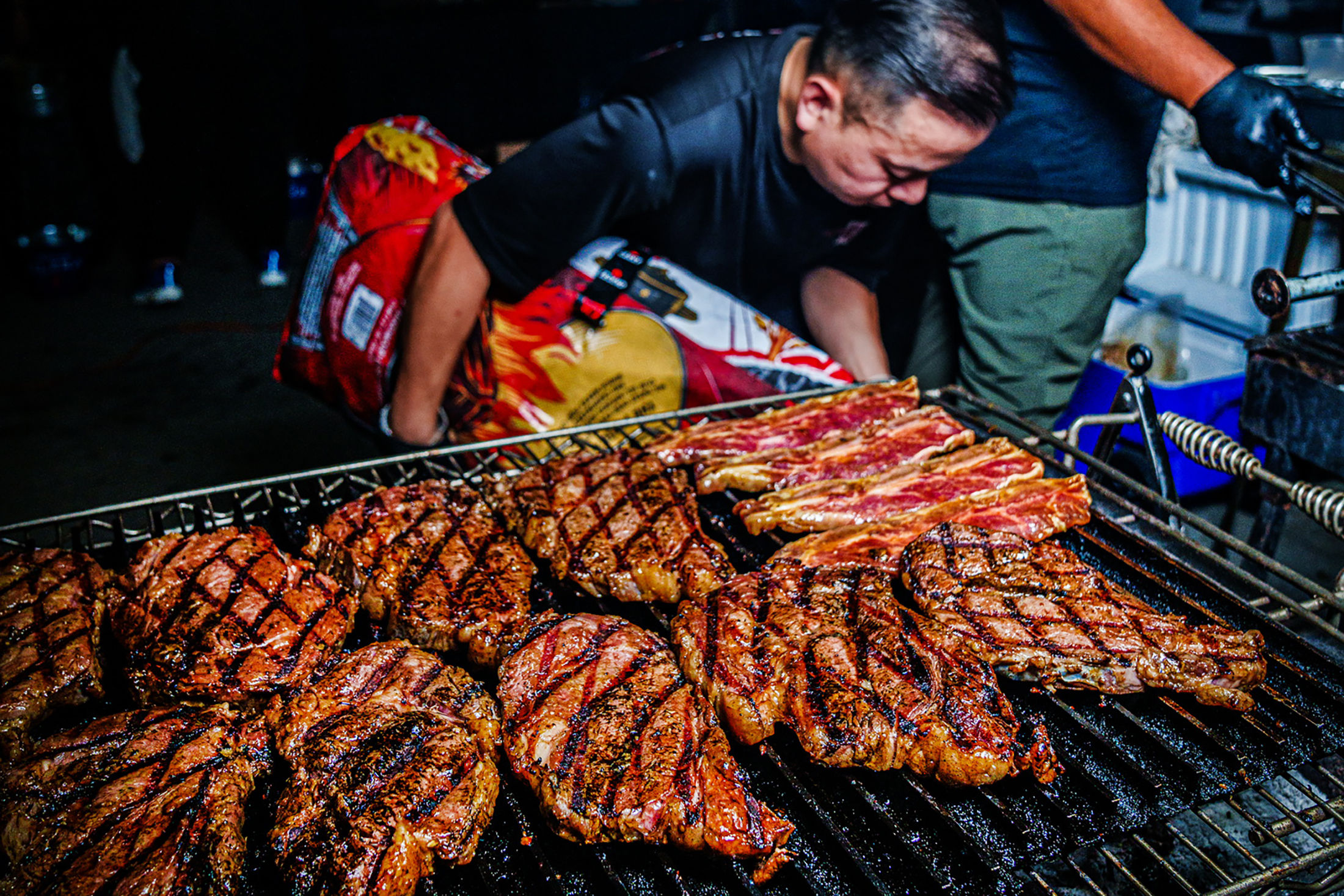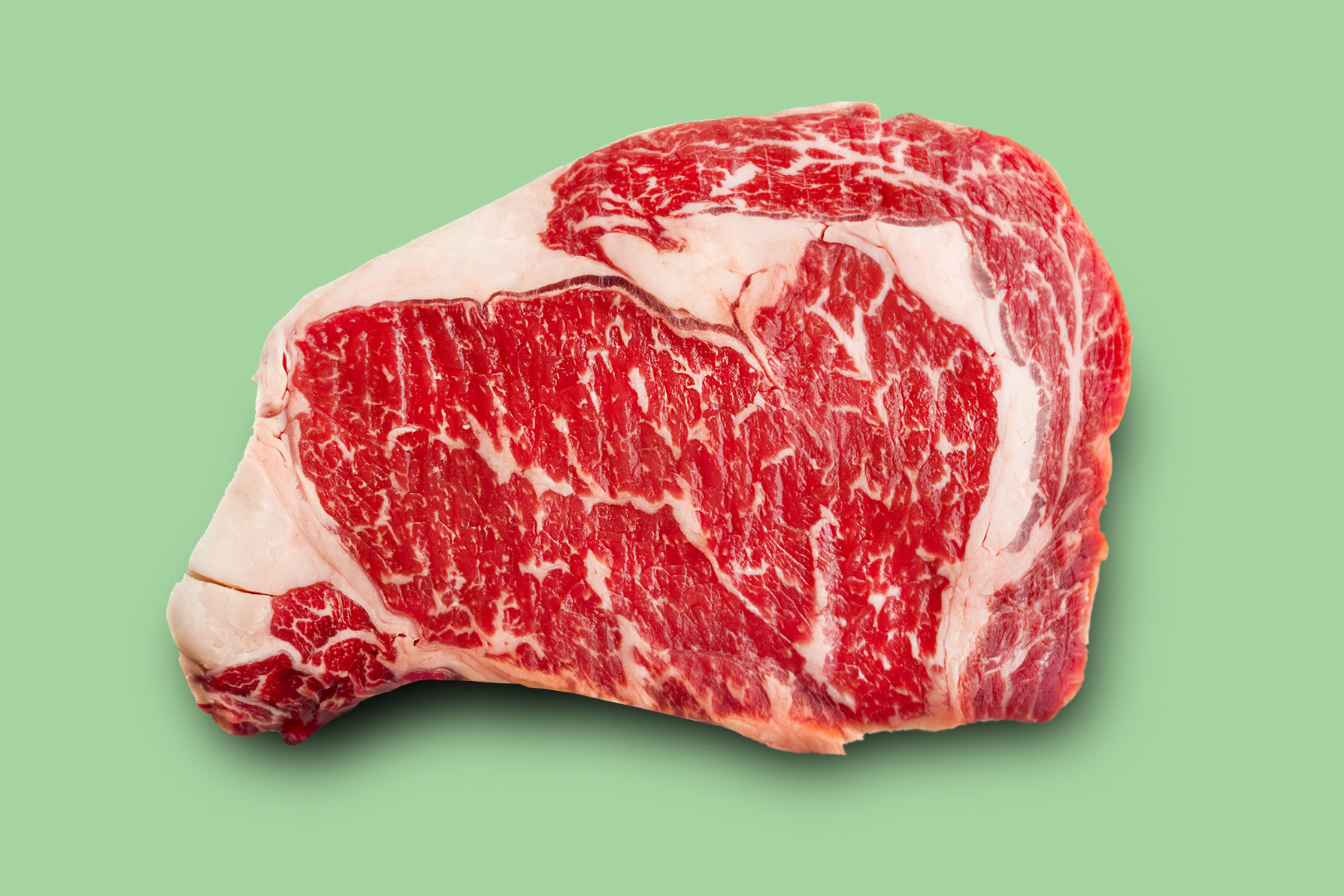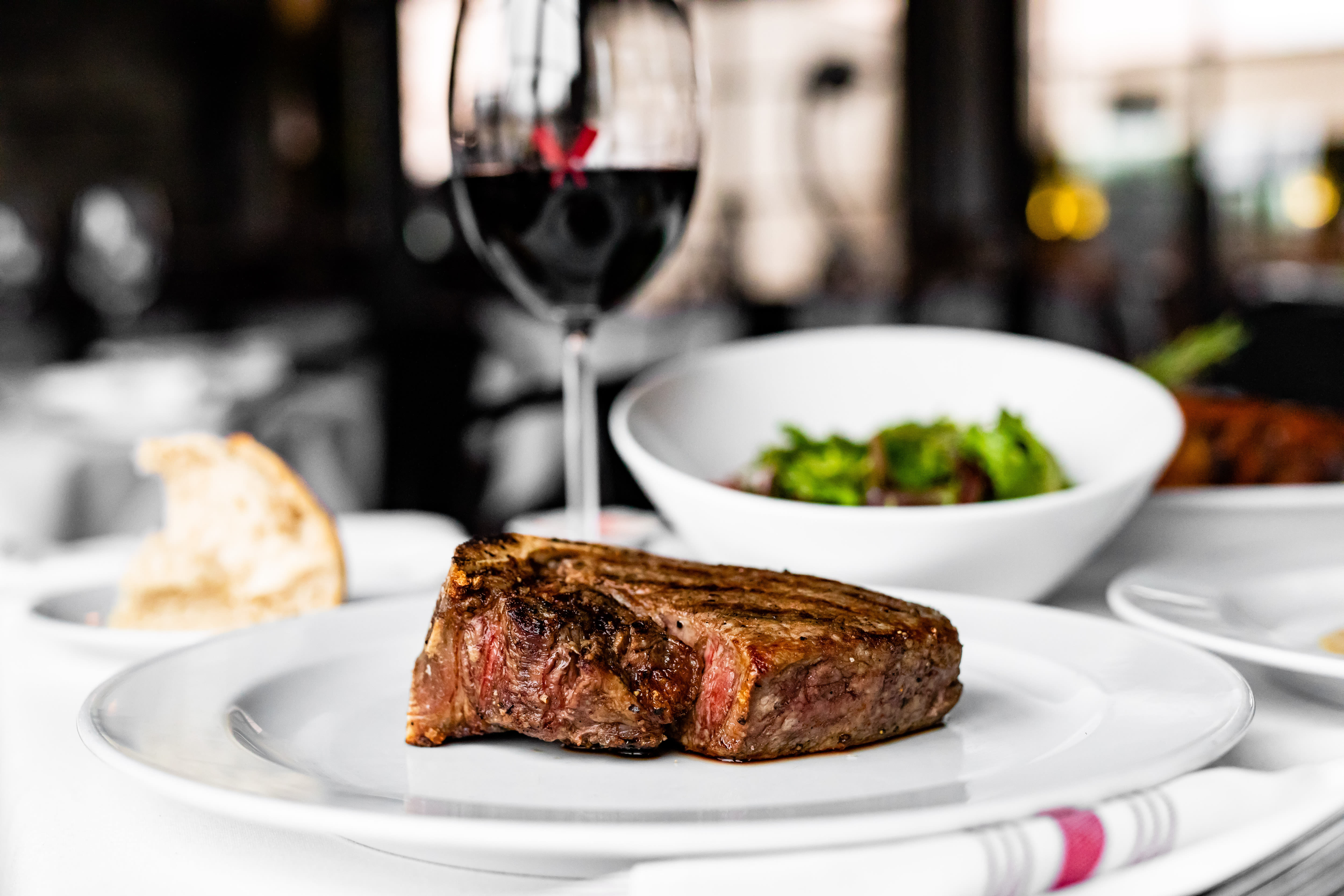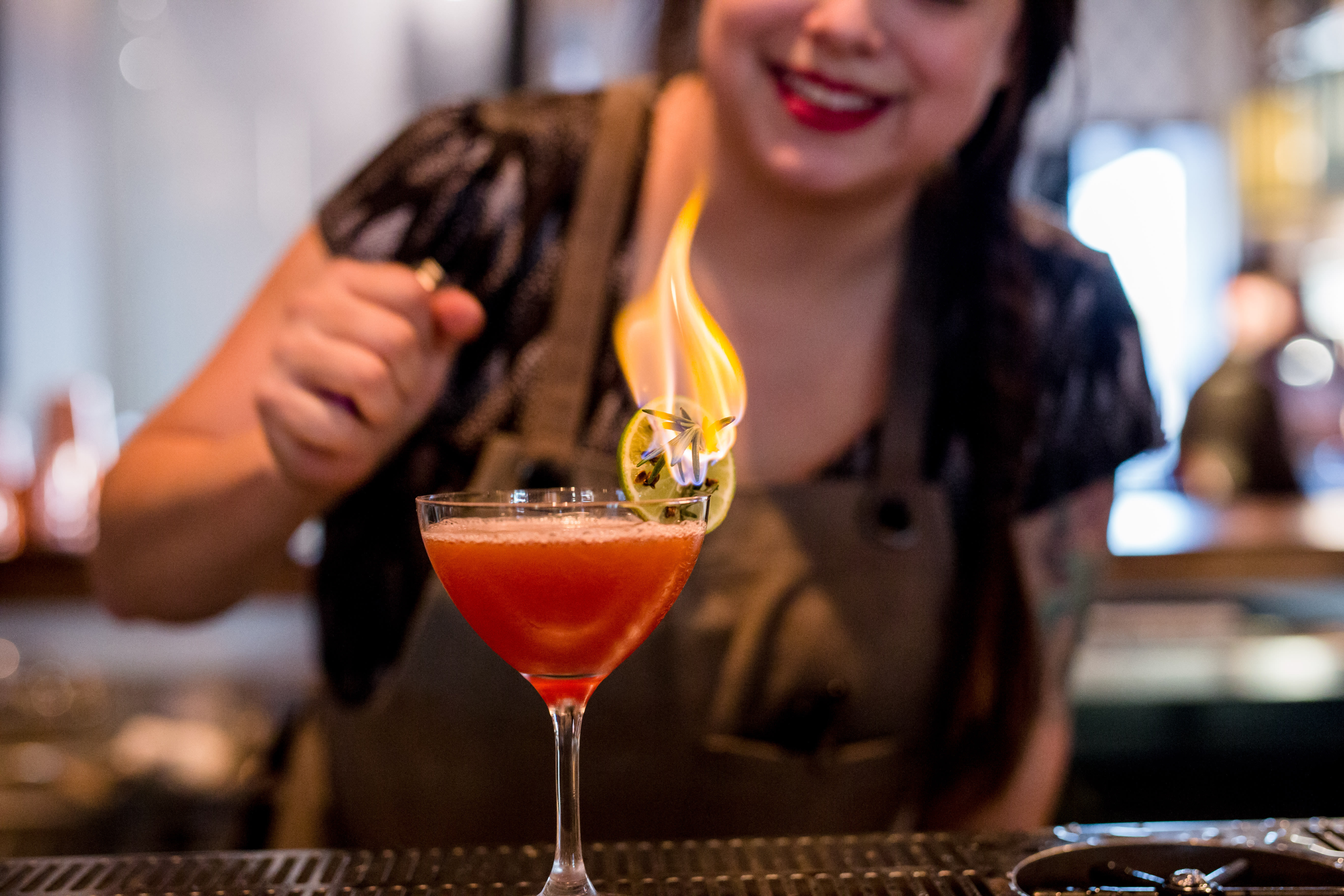Meat Matters at Mastro's Steakhouse and Doris Metropolitan
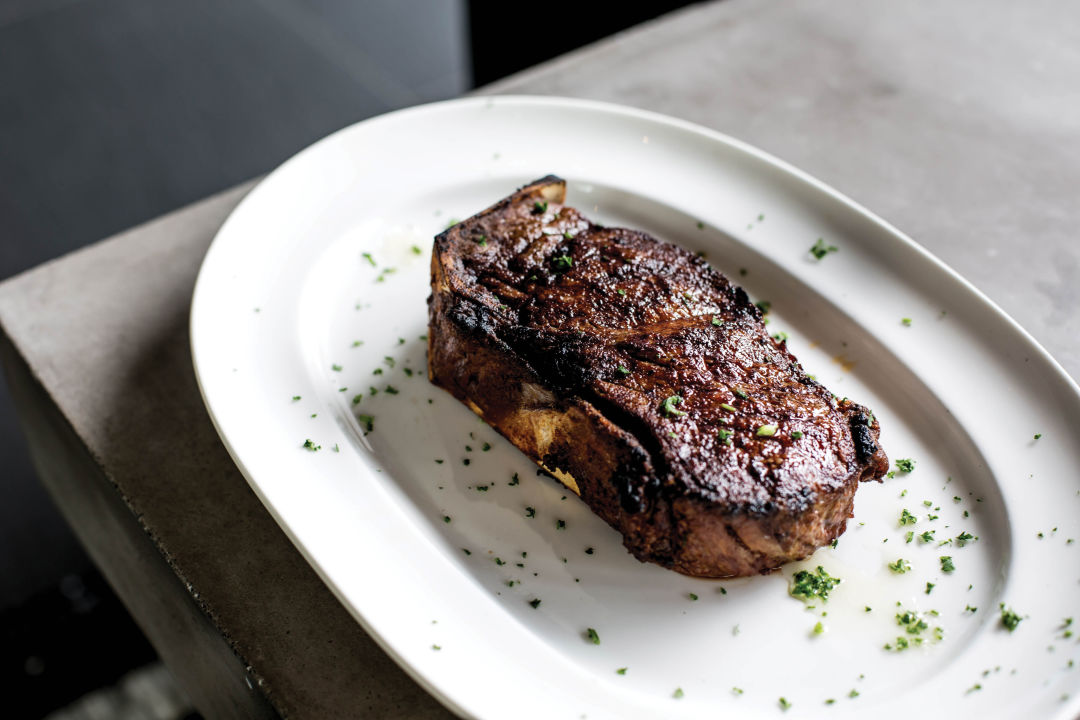
Everything a steak lover could want: the Kansas strip
Image: Jenn Duncan
My first thought: There must have been a power outage. I’ve dined in dark places my entire life, always noting the odd calculus among restaurateurs—the harder it is to see the food, the better it must be—and yet I’ve never had an experience quite like Mastro’s Steakhouse.
“Right this way,” said the hostess, directing our party not to the lively bar area, complete with over-the-top indoor waterfall, live music, and the like, but in the opposite direction, toward the inky blackness of the dining rooms, where a hundred tiny flashlights furiously inspected glassware and settings on dozens of tables. Making our way past walls hung with some sort of artwork and a dimly lit if formidable wine wall—part of a purported almost 30,000-bottle collection—we felt like Chilean coal miners trapped in a Las Vegas dungeon. And arriving at our table and hearing that our waitress suffered from an uncorrected astigmatism only increased fears of disasters to come. But, oh well, this is why God invented smartphones, or one of the reasons anyway, and soon we, along with seemingly every other diner in the place, had trained our flashlights on the Mastro’s menu.
Though only a single page in length, it is a formidable document, boasting foodstuffs from every habitable land mass on earth and probably a few others besides. Tilman Fertitta, the mogul behind Mastro’s, has brought us racks of lamb from Australia, scallops from Nova Scotia, Dover sole direct from the straits themselves, salmon from New Zealand, grapefruit liqueur from the Loire Valley, and Wagyu Hamburger Helper abetted by Betty Crocker (yes, really). And local lights will be pleased to learn that the Billion Dollar Buyer has not forgotten his roots. Fertitta’s redfish hail from Palacios, his chickens from Cobb Creek, his quail knots from Lockhart.
Even as shadowy blobs of humanity arrived to fill our water glasses, we questioned whether our pupils were capable of sufficient dilation necessary to enjoy a Mastro’s meal, meanwhile scrutinizing the menu, which—especially under low-light conditions—seemed the most impressive one-page document in the history of restauranting, a model of economy and breadth not even the Gettysburg Address could match.
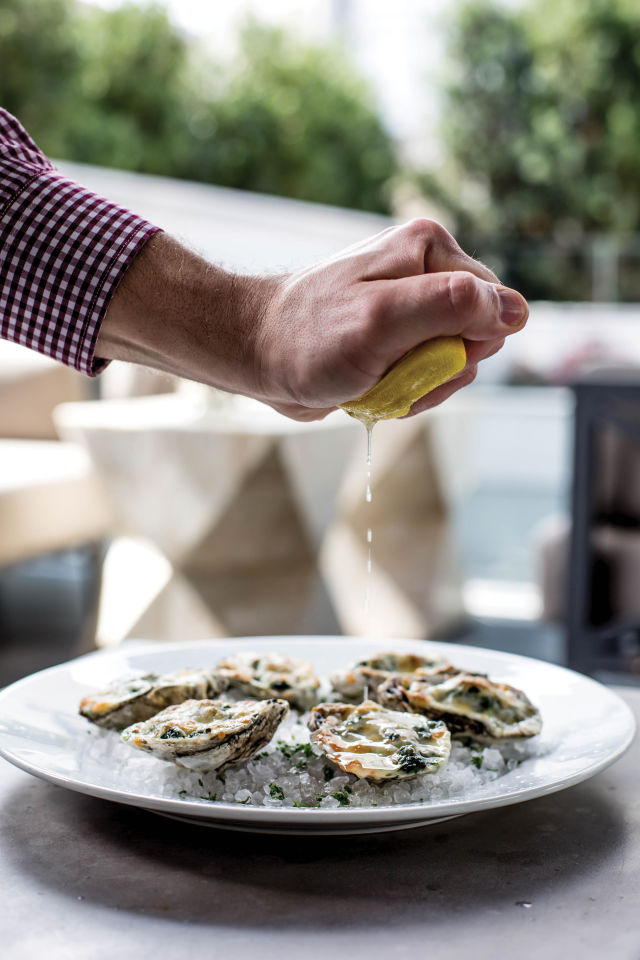
Fantastic: the oysters Rockefeller
Image: Jenn Duncan
And as for impact, well, let’s just say that the word “colossal” appears no fewer than four times in the appetizer list alone, a descriptor Mastro’s deploys for everything from crab cakes to shrimp cocktail to hand-cut onion rings. This is menu as manifesto, a declaration that diners paying top dollar have a right to be wowed—by towers of seafood on dry ice that sail through the dining room leaving smoky trails in their wake, by tomahawk steaks whose ginormousness is rivaled only by Alaskan king crab legs, by the unending succession of Houston glitterati parading past one’s table (the “society swells, energy tycoons, and sports stars” the Chron warned us to expect), and by the near impossibility of securing a weekend reservation.
Given the set-up and attendant expectations, one might expect Mastro’s allegiances to lie with gimmickry over gastronomy, but such is not the case. Once the dry-ice clouds finally lifted, we discovered that the shrimp in the shrimp cocktail really were colossal, and exceedingly fresh besides. The oysters Rockefeller were fantastic, the bird’s-nest seafood dumplings exquisite. The red snapper, perfectly cooked, arrived generously dolloped with crab meat, and the bone-in Kansas City strip was everything a steak lover could want.
Mindful that the word steakhouse conjures a raft of clichés in diners’ heads, every meat palace longs to be more than what it is these days, and Mastro’s is no exception. It isn’t enough to offer 25 different cuts of beef, everything from a $41 six-ounce petite filet to a $200 cut of Japanese A5 Wagyu. Mastro’s must be an above-and-beyond sort of place, the last word in special occasion dining. Whence come some spectacular surprises (a hot butter cake dessert that is quickly becoming legendary, and justifiably so), some intriguing misfires (the lobster mashed potatoes are mere lumpy puree), and lots of forgivable instances of trying too hard. (After someone—presumably a local tycoon/swell/star—complained, the lights were bumped up a notch.) Then again, if not such instances of shock and awe, would a four-top still happily shell out $500 or more for dinner?
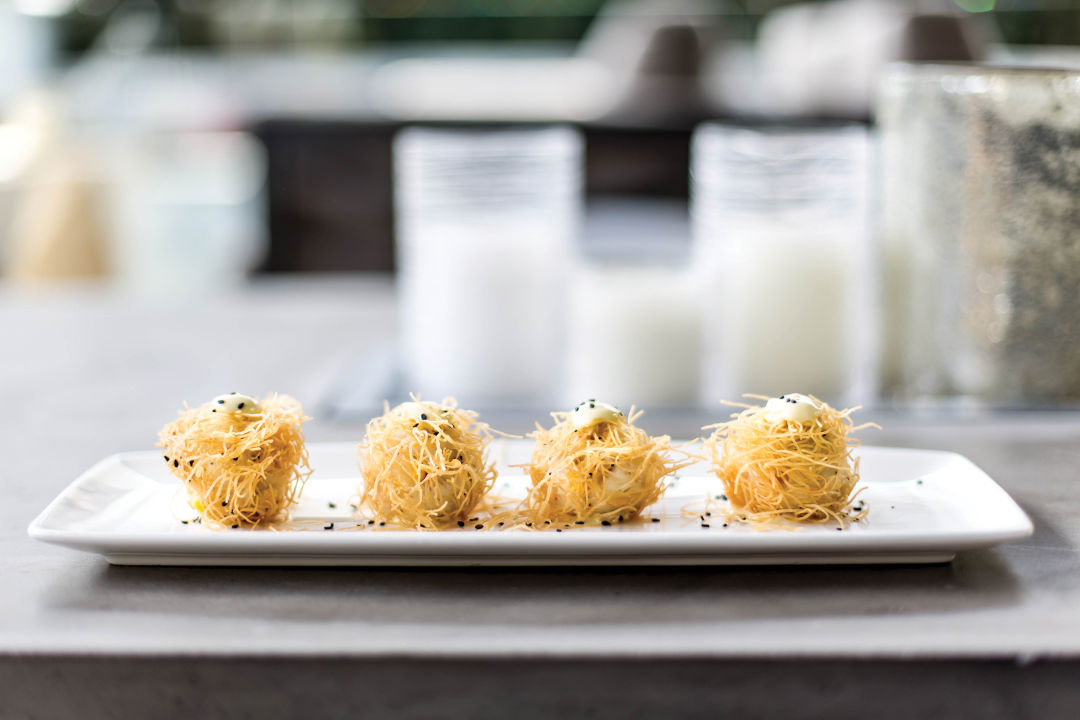
Exquisite: bird's nest-seafood dumplings
Image: Jenn Duncan
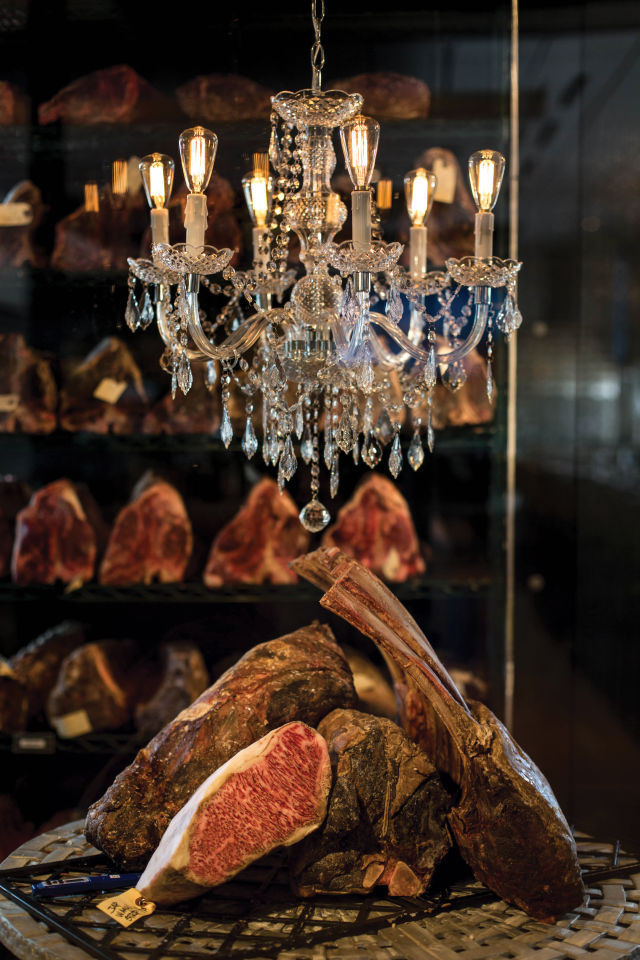
The meat locker at Doris Metropolitan is a sight to behold.
Image: Jenn Duncan
We live in benighted times, carb lovers. The bread course, once a crucial piece of the fine-dining puzzle, is now little more than an afterthought, and small wonder, given the increasing percentage of diners hell-bent on protecting their ketosis. This is not the forum in which to judge the sanity of such dietary restrictions. Still, I can’t resist offering a warning to all protein lovers planning a visit to Doris Metropolitan (aka the other new steakhouse that opened last December). Understand that bread will be brought to your table—bread swirled with olives and pesto, bread dotted with onions and feta, a small bag of focaccia—and you will eat it. No, not eat it, devour it, shamelessly so, like a wanton animal. That’s particularly true of the focaccia, which despite an unassuming, bun-like presentation possesses a loveliness Dr. Atkins himself would have been powerless to resist.
If Doris isn’t, on the whole, quite as irresistible, it may yet become so. There’s an unforced specialness to the place courtesy its Israeli-born owners, Itai Ben Eli and Dori Rebi Chia and Itamar Levy, whose menu is loaded with interesting ideas, along with Middle Eastern flavors you’ll find on no other steakhouse menu. The trio, who already operate Dorises in New Orleans and Costa Rica, have smartly reimagined the old Triniti space, extending the bar into the dining room and the dining room into the kitchen. Choices like that, along with table lamp accents and a color palette that ranges from sky blue to French’s mustard, telegraph Doris’s laudable desire to offer an informal, unique meat-palace experience. And as the menu makes clear, such differences are hardly surface-only.
First to catch our table’s eye were distinctly unbeefy appetizers like the artichoke salad, composed of no fewer than three takes on the edible thistle, the most delicious of which was a carciofi alla romana, an utterly heavenly artichoke poached in olive oil and lemon juice. Another starter, a duck egg–sized beetroot plated with pesto and a goat cheese crème fraiche, was both tasty and surprising: A soft slice of the beet revealed a happy stuffing of cheese and pistachio nuts. A third app, a plate of crostini and three hunks of artisanal cheeses from Dairymaids, was faultlessly curated. Indeed, as the meal progressed, it was the non-meat selections—the Israeli salad with tahini, the root puree, even the truffle fries—that kept commanding our attention, sometimes upstaging the marquee attraction.
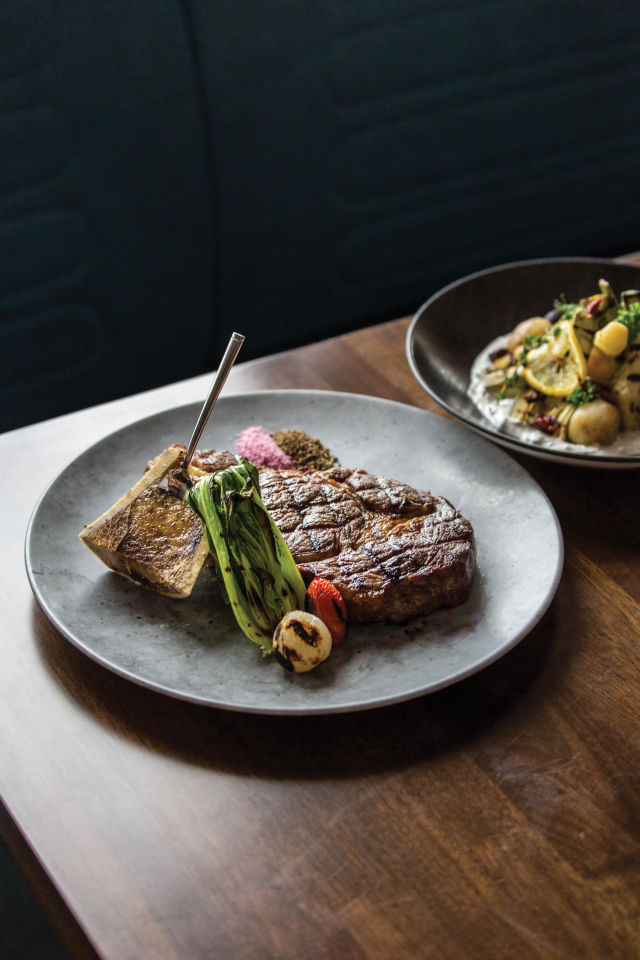
Steaks like the rib-eye are substantial and satisfying.
Image: Jenn Duncan
In the corner of the dining room, not far from Doris’s attractive, 30-seat bar, stands the meat locker in which many of said marquee attractions are dry-aged (don’t miss the chandelier hanging inside, a sly comment on steakhouse excess). One member of the restaurant’s unfailingly friendly and attentive wait staff informed us that the meats typically spend either 21 or 31 days in the pen, a difference that affects their flavor mightily, and their prices mildly. (An 18-ounce ribeye aged for 21 days costs $44, while the 31-day variety goes for $50.)
Just when we’d decided to fork over a Ulysses S. Grant for a full month in the cold, however, a second member of the wait staff appeared out of nowhere, confiding sotto voce that most diners detect no difference in the steaks’ taste or tenderness. We took the man at his word and went the cheaper route, ordering younger rib eyes and New York strips, which, like all Doris’s steaks, came nearly naked, accompanied by only a hint of greenery and small anthills of salt and pepper.
Both plates contained substantial, satisfying cuts of meat, well-fired and decently seasoned, and for some diners, perhaps that will be enough. In our case, the extravagance of Doris’s starters and veggie offerings led us to expect similar ingenuity from the beef, something that would raise the steaks, separate Doris from the herd, and address any other meat-related puns we could think of. We were often left wanting. Still, the menu offers a few intriguing glimpses of what might be.

The beetroot is plated with pesto and goat cheese crème fraiche.
Image: Jenn Duncan
An entrée called Falls off the Bone, in which short ribs cooked for 24 hours are accented by smoky tomato flavors and served atop Doris’s terrific root puree, was a wonderful surprise. The so-called classified cut, a proprietary 9-ounce slab of beef, garnered raves from a neighboring diner, and we heard a few genuine gasps of delight when small fires erupted on adjacent tables, the diners having ordered an off-the-menu flaming meat board. Would that a few more gasps might be heard.
“We believe at its core, fine dining should be unpredictable and unprecedented,” reads a mission statement on the Doris website, a perfectly respectable goal, one which the Mastro’s mogul no doubt shares. (“You’re not coming here because it’s a steakhouse,” Fertitta told the Chron. “It’s more than a steakhouse.”) But just how much of a departure from the genre will the city’s diners accept? It’s a question that’s left both eateries in the dark, at least for the time being.
